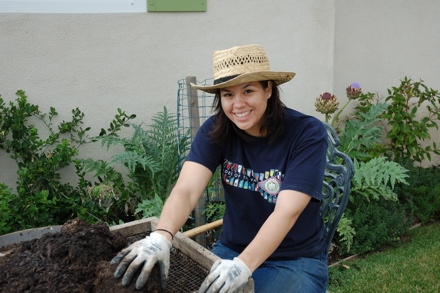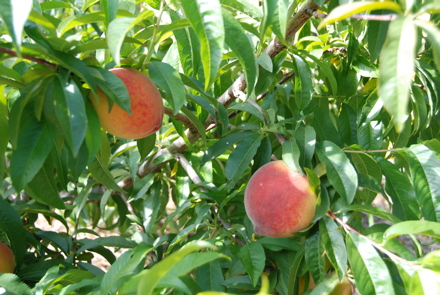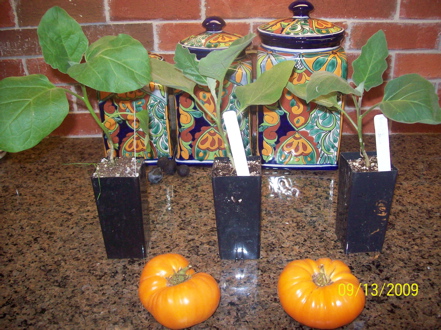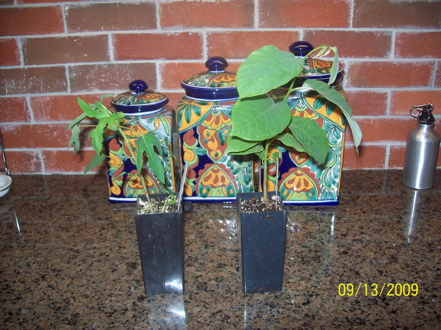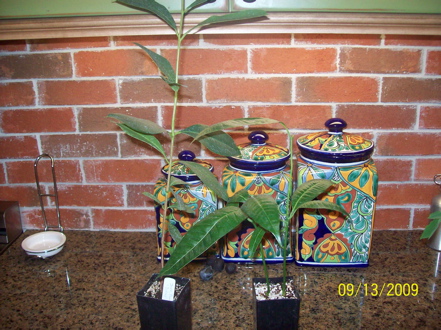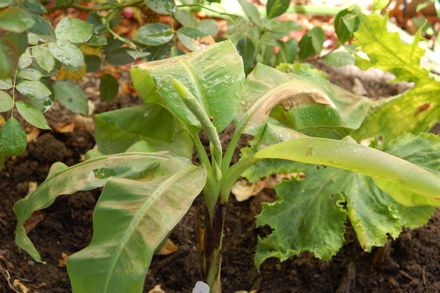Here in Southern California, we should plant fruit trees in January. That’s why I place my order in October: so that I don’t miss out on some of the best trees Bay Laurel Nursery has to offer. For example, last year I couldn’t purchase the Spice Zee Nectaplum because they had run out by the time I got around to ordering.
My neighbor was excited enough to buy two trees at my urging. Her son, Max likes Asian Pears, and there’s really only one variety sold by Bay Laurel that doesn’t need a pollinator: a Shinseiki Asian Pear. Then I suggested we try cherries together, because cherries usually need a pollinator. I like Royal Ranier, which is a large yellow cherry with a reddish blush. She ordered a Lapins Cherry, which pollinates the Ranier. Lapins is described as “large, firm, dark red sweet cherry with good flavor… ripens in early June” and it’s self-fruitful, but also pollinates other sweet cherries. We need to plant them within 100 to 150 feet from each other.
I bought the Spice Zee Nectaplum, described thusly: “It is slightly acidic and loaded with sugar, giving it a spicy sweet flavor. One can detect both plum and nectarine traits with ease. Spice Zee is a beautiful ornamental tree with a tremendous spring bloom followed by dark red leaf in the spring that matures to a rich green-red in late summer… very productive.”
I’m also trying my first true miniature tree, called Garden Delight. It’s a nectarine, with large fruits growing on a bush-shaped tree that reaches a maximum of 6 feet high. Sounds very interesting to me. Plus, it ripens just before the next tree I’m going to describe, offering a longer season for peaches and nectarines than I’m currently experiencing.
Liz’s Late is the last tree I’m trying. It’s also a freestone nectarine, described as: “Taste test flavor winner… Sprightly-sweet, intense, spicy flavored, yellow meated freestone with red over yellow skin. Ripens late August into early September.” I’m replacing my Snow Queen nectarine with this tree because Snow Queen nectarines crack too easily, in my experience. They are also a white fleshed nectarine, which is usually very sweet but not tart enough, in my opinion, to be interesting.
Lastly, I ordered another Southmoon Blueberry bush to replace a Sharps blueberry. The later had a lot of blueberries on the bush, but they were smaller and had more seeds and tasted tarter than the big, fat tasty Southmoon Blueberry.
I also ordered a Gala apple tree and a Double Delight nectarine for a friend of mine. I stick with dwarfing rootstocks so that they’ll have easy-to-pick trees, but I will have to prune and train their nectarine tree to give it a good start. I’m just learning how to prune apple trees.
Interesting side note: the miniature tree I’ve bought is grafted onto a regular rootstock, not a dwarfing rootstock because the tree itself is always bush-like. On the other trees, the rootstock helps to reduce the size of the trees, but you still have to prune them like crazy because peaches and nectarines grow very fast and can easily get tall.
The trees will ship in January, when it’s possible to plant the trees without worrying about the ground being frozen or worrying about hot, dry weather drying out the new tree.

